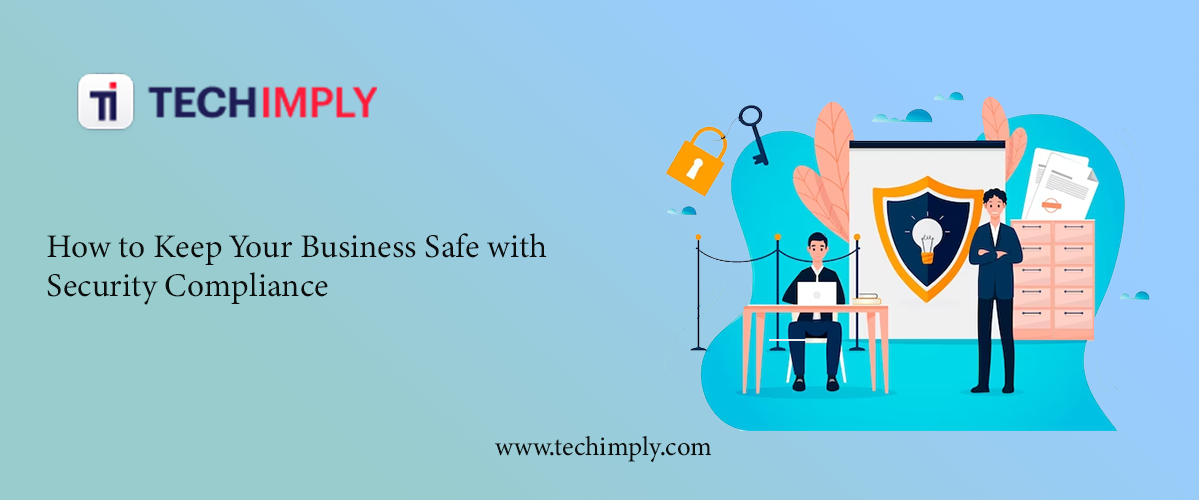As businesses increasingly rely on digital technologies to store sensitive information, the risk of data breaches becomes more significant. The consequences of a data breach can be devastating, including financial losses, damage to brand reputation, and legal prosecutions. To protect themselves and their customers, businesses must comply with security regulations and standards. This blog will discuss the importance of security compliance and provide practical tips on how to achieve compliance.
What is Security Compliance?
Compliance means taking steps to ensure that organizations adhere to a set of standards established by a third party, like the International Organisation for Standardization (ISO), or National Institute for Standards in Technology (NIST), or federal law, like the Sarbanes Oxley Act.
Why is Security Compliance Important?
IT security compliance is paramount in determining an organization’s ability to protect data, prevent financial penalties, build customer trust, and develop a security culture.
According to IBM Security’s Cost of a Data Breach Report 2022, compliance is one of the major factors when it comes to the cost of data breaches. Companies with high levels of compliance failures found that their data breach cost an average of USD 2.26 million more than organizations that were in compliance. The average cost of data breaches with high levels of compliance failure was USD 5.57 million.
Such breaches of Personally Identifiable Information (PII), Protected Health Information (PHI), or financial information can cost companies reputation and financial losses. Adhering to regulatory standards and protecting the Confidentiality, Integrity, and Availability (CIA) of data is necessary for organizations.In this context, understanding the multi-factor requirements for CMMC becomes crucial for businesses operating in or with the defense sector, as it outlines specific levels of cybersecurity practices and processes that must be met. Compliance with CMMC not only helps in safeguarding sensitive information but also in aligning with industry best practices for cybersecurity.
Steps to Achieve IT Security Compliance
-
Conduct Risk Analysis
Conducting a risk analysis should be at the top of the list before starting the compliance process. Risk analysis is a continuous process that helps uncover hidden vulnerabilities in the compliance posture and provides an understanding of existing security processes. The process includes:
-
Assessing the risk by identifying all information assets and systems, networks, and data.
-
Reviewing each level of data type and identifying how risk information is stored, collected, and analyzed.
-
Analyzing the risk using the following formula: Risk = (Likelihood of Breach x Impact) / Cost.
-
Deciding whether to refuse, accept, transfer, or mitigate the risk.
-
Setting up policies to help document compliance activities and control. These policies are necessary to conduct internal and external audits.
-
Develop Policies and Procedures
Based on the outcome of the security risk analysis, update existing policies and procedures for protecting data. Document every security-related operation. Regulators and assessors expect organizations to share documents on demand. Therefore, IT admins must capture everything—from processes to security logs to historical data—which can be provided as evidence when needed.
-
Implementation
After the policies and procedures have been identified, planned out, and documented, they need to be implemented. This includes the following:
- Updating existing software and operating systems
- Purchasing security software and necessary tools
- Maintaining a security risk register to monitor systems' health over time
- Conducting mandatory training and awareness programmes for the entire organization
-
Monitor and Respond
Organizations can fall out of compliance if they do not monitor their controls and actions regularly. IT teams must establish a process of monitoring security systems with updates, security patches, vulnerability checks, and third-party assessments.
Teams should deploy a system that identifies security issues and delivers proactive alerts in case of any gaps. Some regulations may require companies to monitor suppliers and partners for security issues.
-
Validation
To prove that the organization is compliant with industry regulations, invite a third-party data security firm to validate the newly established security protocols, procedures, and the implementation of those policies and procedures. This process incurs additional costs but will help maintain data security and trust.
An SSAE18 SOC 2 Type II security protocol can cover a large spectrum of industry-regulated data security requirements, including:
- HIPAA
- GLBA
- SOX
- FERPA
- FISM
- NIST
Benefits of IT Security Compliance
Organizations that establish systems that protect the security and privacy of customer data will incur costs, but there are also significant benefits to IT security compliance. Besides maintaining industry-specific certification and avoiding costly data breaches, there are several benefits of IT security compliance to help businesses.
-
Avoids Fines and Penalties
There are existing compliance laws that apply to specific industries. In Northern America, Europe, and around the world, lawmakers are imposing legislation that protects the security and privacy of customer data. Violating the laws can lead to severe penalties, but appropriate security compliance measures can prevent such issues by securing the data companies collect.
-
Protects Business Reputation
Data security has improved significantly. But data breaches are still a common occurrence. For instance, in one of the first data breaches of 2022, malicious actors gained access to important company data of the International Committee of the Red Cross (ICRC).
The data breach led to the theft of sensitive data of over half a million people. The data breach included people’s names, locations, and contact information. Such data breaches harm a company’s reputation and undermine the trust between the organizations and customers.
-
Enhances Operational Efficiency
Organizations using security technologies to maintain compliance can manage excess data, expose privacy loopholes, identify wasted assets, and implement new resources to improve operational efficiency. For example, device security management tools can also be deployed on the organization’s internal network.
These solutions can identify people, processes, or applications on the network that are poorly managed or configured to drive maximum results.
-
Builds Security Culture
According to a 2022 Verizon report, 85% of data breaches in organizations involve a human element. While cloud-based assets encounter the most malicious attacks, passwords and credentials are the most sought-after data types. Developing a security culture across departments and workflow management systems helps employees follow safe digital practices and reduce risky behavior.
Organizations with robust security awareness and training programs share relevant knowledge and skills with employees, helping them identify safety breaches and follow appropriate measures to protect sensitive data.
-
Supports Access Controls and Accountability
Effective IT security compliance ensures that individuals with appropriate credentials can access databases and systems that contain sensitive data. Implementing security monitoring solutions ensure access to those systems is monitored at an organizational level, and every action with the system is recorded such that it can be traced back.
Such mechanisms help protect the security of sensitive customer data or an organization’s proprietary data. Additionally, providing a single user with specific credentials for a secure application is effective for the security and maintenance of software license agreements (SLAs).
Wrapping Up
With an uptick in data breaches, security compliance today has become an important asset for organizations. It goes beyond checking boxes and starts employing robust security protocols and procedures to protect an organization’s most critical assets. Security compliance compels organizations to identify any gaps in the existing IT security program which could not be identified without a compliance audit.
Becoming compliant with industry-specific standards bolsters reputation and increases the chances of new business from security-minded customers.






